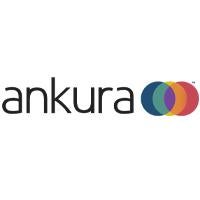Innovative technology, agile thinking, and operational simplicity are just some of the factors allowing new entrants to take market share from the much bigger incumbents, writes Andrew Pimlott
Challenger banks have achieved a great deal of success since they burst on the scene in a big way a decade or so ago to vie with traditional retail banks for a share of the market. The best challengers are consistently beating their long-established rivals in the popularity stakes, and even the more mediocre new entrants are creating meaningful customer bases.
They compete with conventional high street banks by using the latest technology, being unencumbered by legacy IT systems, focusing on mobile services rather than branches, and being smaller, nimbler, structurally, and operationally more efficient. The challenger bank trend has been particularly strong in the UK, but it is also happening in Europe, North America, and other regions.
However, despite the publicity they attract and the inroads they have made, it has been far from easy for the new kids on the block. The largest banks still control a vast share of the market.
In the UK for example, the regulator has authorized around 30 new banks since 2013, but a report by the Social Market Foundation, Banking and Competition in the UK Economy, found that the personal current market is still concentrated in a few big banks. It said annual switching rates over the period of study were stuck around 1.5% to 2% – compared with 12-20% for the gas and electricity markets – because of customer inertia.
Nevertheless, the future looks promising for the challengers if they stick to their guns.
Retail banking in a state of flux
The Financial Conduct Authority’s (FCA’s) Strategic Review of Retail Banking Business Models – Final Report last year explored how banks of all types are transforming their businesses to meet the challenges of digitalization, ring-fencing, changing customer expectations, and the need to cut costs. It looked at the “big four banks” (Lloyds Banking Group, Barclays, HSBC, and NatWest), building societies, and challenger banks. It split the latter group into four categories:
• Scale challengers – Santander, Nationwide Building Society, Virgin Money UK, and TSB.
• Mid-tier challengers – Metro, Co-operative, Tesco, and Sainsbury’s.
• Digital challengers – such as Starling and Monzo.
• Non-personal current account (PCA) providers – specialist lenders such as Aldermore, Shawbrook, and Close Brothers.
It is the latter two types – also known as digital banks, online-only banks, internet-only banks, mobile banks, virtual banks, or neo banks (“newbanks,” neo being derived from the Greek word neos) – that have attracted the most attention.
The FCA analyzed data it already held or newly acquired from banks and consumers and arrived at seven key findings, four of which touched on the rivalry between traditional banks and challenger banks. First, although large banks are in a strong position, they face increasing competition from challengers, especially for personal current accounts (PCAs). Second, scale and mid-tier challengers have provided “additional choice and value” for consumers.
Third, digital challengers have rapidly gained share in the UK’s PCA and small business current account markets. They now have around 8% market share for PCAs, attracting customers in part “by offering innovative mobile apps which make the experience of banking easier and more convenient and to help consumers manage their money.” On the downside, PCAs held with digital challengers tend to have relatively lower balances, transaction volumes, and overdraft usage which leads to lower funding benefits and fee income.
Fourth, competition and innovation from digital challengers have forced larger banks to up their game, which has improved service quality for many customers.
Dealroom, an Amsterdam-based provider of global data on start-ups, provides some useful information on European challenger banks, including brief descriptions of most of them and who the investors are. The UK is by far the biggest market, with 39 banks and a combined funding of $7.9bn. Germany is second, with 10 banks – including N26 and Vivid – and a combined funding of $1.9bn; and the Nordics region is third with six banks – including Lunar and Holvi – and a combined funding of $545m.
The attractions of digital challenger banks
Which?, the UK consumer association, says the attraction of digital challengers is their “modern design, personalization, low fees and snappy customer service.” In its latest “Best and Worst Banks” annual survey digital banks Starling and Zopa came top for current accounts and savings respectively. Both earned five stars for every aspect of their services and were named “Which? Recommended Providers.”
Unfortunately for the high street banks, many “continue to underwhelm,” said the association. TSB came near the bottom of the table for current accounts and savings, while HSBC and Royal Bank of Scotland “also failed to impress in many areas,” though both scored decently for their mobile apps.
The Competition and Markets Authority (CMA) conducts a bi-annual survey ranking the service quality of personal and business account providers in Great Britain and Northern Ireland. Following the CMA’s investigation into the retail banking sector, it is compulsory for all relevant banks, of which there are 16, to take part in the surveys to ensure customers get the full picture, and banks have to display their ranking prominently in branches and on their websites and apps. Thousands of customers take part and are asked how likely they are to recommend their provider to friends or family, based on the quality of online, mobile, branch, and overdraft services.
The top-ranked current account providers in the most recent survey were Starling Bank and Monzo, both digital banks, which came joint first. However, First Direct, a telephone and internet banking subsidiary of HSBC, created in 1989, came third, proving that traditional banks can hold their own against digital upstarts.
On the other hand, the bottom-ranked banks were TSB (14th) and Virgin Money (15th) – both “scale challengers” in the FCA lexicon – and Royal Bank of Scotland (16th) which was founded in 1727.
Digital banks tend to be most popular among “digital natives,” people brought up in the internet age, in other words, Generation Z who were born after the mid-90s. But they are also popular with other age groups such as Generation Y (aka Millennials, born between the early-80s to mid-90s) and Generation X (born in the mid-60s to early-80s).
One challenger bank on the rise is Metro Bank UK. It launched in 2010 which was the first new high street bank to launch in the UK in over 100 years. The founders (Anthony Thomson and Vernon Hill) saw a niche in the market for better banking services focused on better customer service and better technology. It prides itself on being open when it suits you, where you can walk in without an appointment and leave with a working account, debit card, and all (cutting out the traditional administration time of bigger banks).
The drawbacks of digital challenger banks
UK consumer association Which? warns that digital challengers are at a greater risk of failing than traditional banks, “so make sure you know how your money is protected.” It points to the failure of Loot, a digital current account aimed at students, which had 212,000 customers but went into administration in 2019. Although it was not covered by the Financial Services Compensation Scheme, which compensates customers up to £85,000 if their bank fails, it was covered by e-money regulations which means their money was protected by Loot’s card issuer.
Even if a digital challenger does not go bust, it could still pull out of the market and cause customers inconvenience. This happened with N26, the German digital bank, which withdrew from the UK market in 2020, citing Brexit as the reason.
There is also a slightly higher financial crime risk. The FCA carried out a review of challenger banks’ financial crime controls and found them weaker in certain areas compared with traditional retail banks. Most of the problems were down to inadequate checks on customers to reduce the risk of money laundering and sanctions evasion. It also found some instances of banks identifying fraudulent activity but not fully investigating or adequately documenting it.
The future
But these are minor disadvantages compared with the clear benefits that challenger banks – particularly the digital ones – offer customers. The future for this new breed of financial institution looks promising. As the FCA says in its strategic review of retail banking models, “if digital challengers are able to develop a viable and sustainable business model in the future, it could help them to potentially attract more customers.” Several factors are in their favor, such as increased customer familiarity with digital channels, lower costs, and increasingly powerful technology.
On the other hand, there are several hurdles in their way. One is the fightback by traditional banks; HSBC’s First Direct is a formidable opponent as the CMA survey shows. Another is the fact that some customers, especially older ones, still value face-to-face services for significant or more complex transactions.
Other obstacles to navigate are difficulties in building economies of scale, low penetration into the mortgage and consumer lending markets, the need to maintain high service standards and adequate controls as they scale up, and a rising cost base.
None of this seems to worry the leading digital banks, least of all London-headquartered Starling Bank. Last month it announced that it had started 2023 with a “hat trick of achievements.” It topped the Current Account Switch Service (CASS) leaderboard, was named Britain’s best current account by Finder.com, and made the top ten in its debut entry to the UK Customer Service Index joining household names like John Lewis, Marks & Spencer, and Tesco Mobile.
Furthermore, Starling, last year announced it would hire 1,000 more staff for its new Manchester office and reported its first full-year profit since setting up in 2014. And that, of course, is what it is all about –the bottom line.




 />i
/>i
